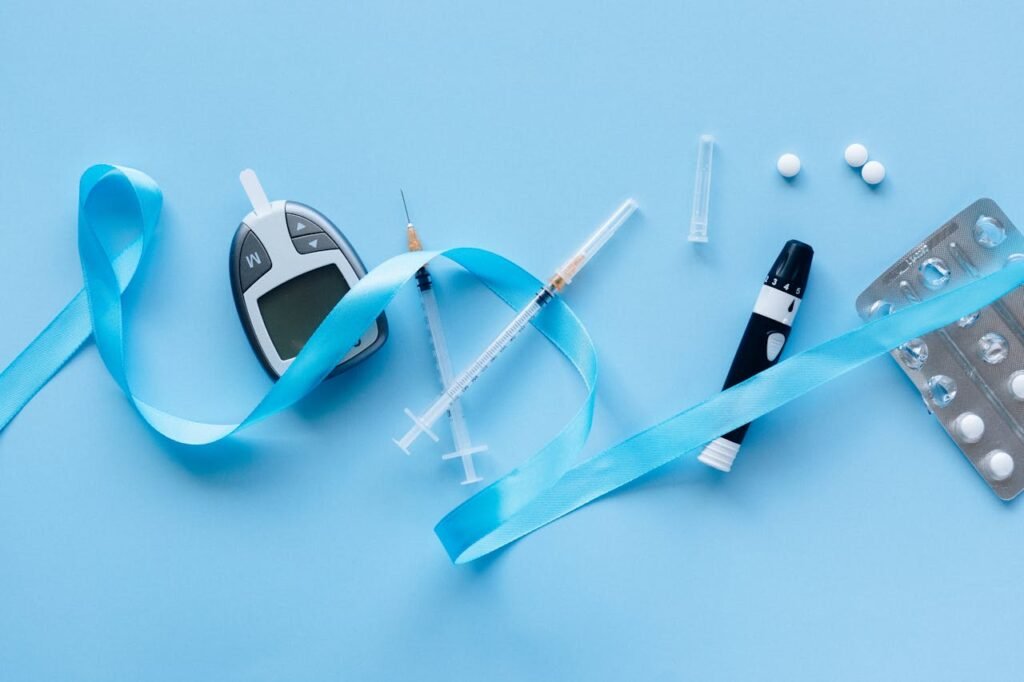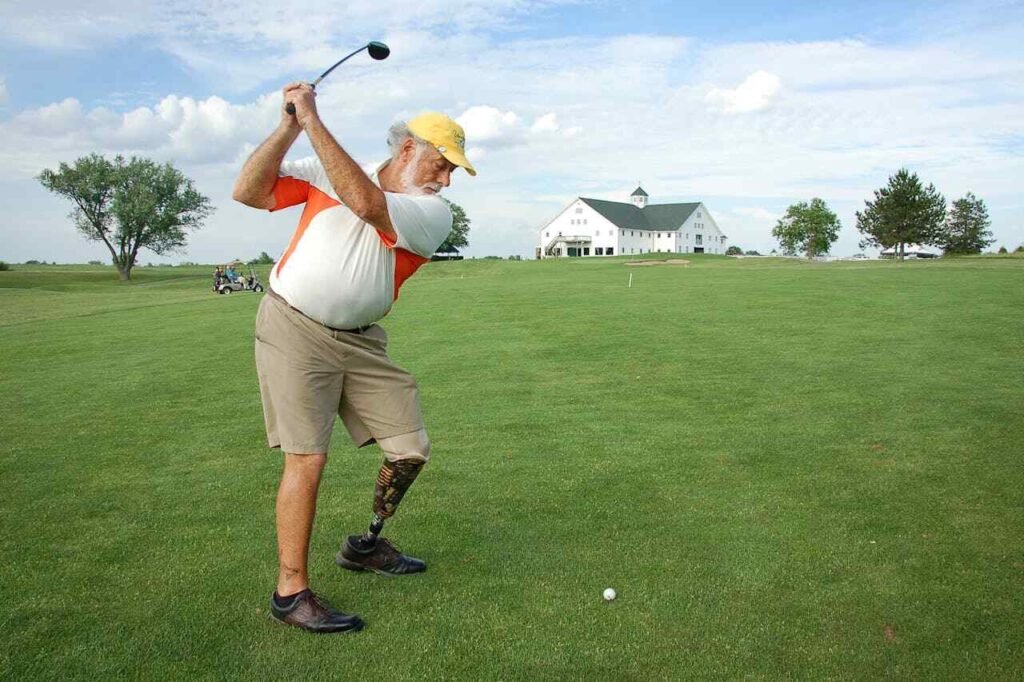Diabetes can change a person’s life in many ways. For some, it leads to limb loss—a challenge that brings both physical and emotional pain. When a leg or foot is gone, so much changes: balance, mobility, strength, and confidence.
But even after amputation, the journey doesn’t end. In fact, it’s just the beginning of healing and rebuilding. One tool that can help in this stage is EMS—Electronic Muscle Stimulation.
EMS sends gentle signals to muscles, helping them stay active even when they’re not moving. For diabetic amputees, EMS has both promise and risk. When used correctly, it can boost strength, improve circulation, and support prosthetic use. But it must be done with care.
This article will walk you through everything you need to know. You’ll learn the benefits EMS offers for diabetic amputees, when it’s safe, when to avoid it, and how to use it at home in a way that’s gentle, effective, and safe.
Let’s begin by understanding how diabetes affects the body, especially after amputation.
Understanding the Diabetic Body Post-Amputation
How Diabetes Affects Nerves and Muscles

Diabetes often leads to a condition called neuropathy. This is when the nerves—especially in the feet and hands—start losing their ability to feel or send proper signals.
In diabetic amputees, this nerve damage doesn’t stop after the surgery. It continues to affect the remaining parts of the limb. Muscles near the stump can become weak, slow, or unresponsive.
This is where EMS can help—but only if used carefully. EMS gives the muscles a boost, helping them contract and relax when the nerves can’t do it fully on their own.
But since diabetic nerves are already sensitive or damaged, EMS must be gentle. The goal is to support—not stress—the system.
Slower Healing and Skin Sensitivity
One of the biggest concerns for diabetic amputees is skin health. Diabetes slows down healing. Even a small scratch can take weeks to recover. This is especially important when using EMS pads on the skin.
The electrodes used in EMS therapy stick to the skin and send mild electric pulses through it. If the skin is already fragile, irritated, or healing from a wound, these pads can cause more harm than good.
That’s why it’s important to check the skin every single time before and after using EMS. If there’s any redness, cracking, or soreness, it’s better to wait and let the area heal before continuing therapy.
This step can’t be skipped. Safe use depends entirely on healthy skin.
Blood Circulation Challenges
Poor circulation is another big concern for people with diabetes. The blood doesn’t flow as easily through the legs and arms. This leads to cold feet, delayed healing, and a higher risk of infection.
After an amputation, circulation becomes even more important. The stump area needs strong blood flow to heal, stay warm, and support prosthetic use.
The good news is that EMS helps with this. Even low-level EMS can stimulate circulation by making muscles gently contract. This pulls more blood into the area, delivering oxygen and nutrients.
But again, it must be done carefully. If the settings are too high, or the session is too long, the opposite can happen—fatigue, pain, or tissue strain.
That’s why diabetic amputees need EMS protocols tailored to their body, not general plans made for others.
Benefits of EMS for Diabetic Amputees
Supporting Residual Limb Strength
After an amputation, the muscles near the stump often weaken quickly. This happens even faster for people with diabetes, because their nerves may not fully activate those muscles.
EMS helps fill that gap.
By sending small pulses to the residual limb, EMS tells the muscles to move—gently but purposefully. This prevents muscle loss. It also helps maintain shape and tone, which makes prosthetic fitting easier and more stable.
Without regular muscle activity, the stump can shrink or soften, making it harder to wear a prosthetic for long hours. EMS helps avoid this by keeping the muscle tissue active even when full movement isn’t possible.
Improving Local Circulation Safely
For diabetic amputees, healthy blood flow is not just helpful—it’s critical.
EMS encourages blood flow to the affected limb through rhythmic muscle contraction. Each time the muscle tightens and releases, it gently squeezes nearby blood vessels. This helps push oxygen-rich blood to the skin and tissue, supporting healing and warmth.
Better circulation can reduce the risk of skin breakdown and lower the chance of infection—two major concerns in diabetic recovery.
But it must be done slowly and in short sessions. Too much stimulation too quickly can lead to swelling or irritation.
It’s always wise to start with short sessions—10 to 15 minutes—and only increase if there are no signs of redness or fatigue.
Easing Phantom Limb Discomfort
Many diabetic amputees feel a strange, often painful sensation in the limb that’s no longer there. This is called phantom limb pain. It’s caused by nerve signals in the brain that haven’t yet adjusted to the new body shape.
EMS can help.
When used regularly on the stump, EMS helps the brain understand that the muscle is still active and connected. This new, real signal can calm the old, confusing phantom signals.
It’s not a cure—but for some users, EMS reduces the frequency and intensity of phantom limb pain. It can also make it easier to sleep, which helps overall recovery.
Preparing for Prosthetic Use
Prosthetics, especially myoelectric ones, work by picking up electrical signals from the muscles.
If the muscles near the stump are weak or poorly trained, the signals can be unclear or hard to detect. This makes it harder to control the prosthetic hand, foot, or arm.
EMS strengthens these muscle signals over time. Even a few weeks of use can improve the quality of the muscle response. That means the prosthetic becomes more responsive—and the user has more control.
This makes everyday tasks like walking, standing, or gripping objects easier and less tiring.
Cautions and Risks of EMS for Diabetic Amputees
Skin Checks Are Non-Negotiable

For diabetic users, skin care is not just routine—it’s protection.
Before placing EMS pads on the stump or nearby muscles, always inspect the skin closely. Look for redness, cuts, dryness, swelling, or any sign of irritation.
Even a small sore can quickly worsen in someone with diabetes. Applying EMS over that area could lead to skin breakdown, discomfort, or infection.
If you notice any issue, skip EMS for that session. Clean the area gently and apply moisturizer once dry. Wait until the skin heals fully before resuming.
It’s also important to clean the skin before each session. Oils, lotions, or sweat can affect how the electrode pads stick and how the electrical signals pass through the skin.
Use a clean cloth or alcohol-free wipe to gently clean the area.
Avoid Overstimulation of Nerves
Because diabetes affects nerve sensitivity, some parts of the limb may feel numb, while others may feel overly sensitive.
Using EMS over a numb area might feel like nothing at all. But that doesn’t mean the muscles aren’t being pushed too hard.
The opposite is also risky. If EMS is applied to an overly sensitive spot, it might cause burning, tingling, or shooting pain. This discomfort can linger long after the session ends.
That’s why starting at the lowest setting is critical.
Begin with short, mild pulses and watch closely for any reaction. If the user feels strange, sharp, or uncomfortable sensations, stop immediately and adjust the intensity or pad placement.
Keep Sessions Short and Monitored
For diabetic amputees, EMS should never be rushed or run too long. A session that feels safe at 15 minutes might become uncomfortable at 30 minutes.
Start with 10 to 15 minutes per session. Use low frequencies and low pulse widths. Focus on gentle contraction—not big, dramatic movements.
In a clinic, have a therapist supervise the early sessions. At home, always monitor how the user feels during and after. If there’s any sign of strain—muscle fatigue, soreness, dizziness, or skin irritation—reduce the duration or pause use.
Also, avoid back-to-back EMS sessions without a break. The muscle needs time to rest, especially when healing after surgery or fitting into a new prosthetic routine.
Know When EMS Is Not Safe
There are certain conditions where EMS should not be used—especially for people with diabetes:
- If there is an open wound, ulcer, or infection near the stump
- If the user has uncontrolled blood sugar levels
- If the user has a pacemaker or any implanted electronic device
- If the user is currently healing from a surgical revision or skin graft
- If the user experiences nerve pain or electric-shock-like symptoms during EMS
In any of these cases, EMS should only be resumed with a doctor’s clearance.
Diabetes adds layers of complexity. Safety must come before all else.
Safe EMS Use at Home for Diabetic Amputees
Preparing the Home Environment
Creating a clean, calm setup for EMS is the first step in making the therapy safe and stress-free.
Choose a space with good lighting and minimal distractions. The user should be seated or lying comfortably, with easy access to the limb. Make sure the EMS machine, electrodes, wipes, and cables are all within arm’s reach.
Keep a small towel and mirror nearby. The mirror helps with checking the stump or pad placement if visibility is difficult. A towel offers extra support for positioning the limb.
Avoid using EMS immediately after meals, exercise, or bathing. Let the body settle for 30–60 minutes first.
The space should feel safe, familiar, and private. This helps reduce anxiety, especially for those who are new to therapy.
Session Routine and Monitoring
Every session should follow a clear routine.
Start by gently cleaning the stump with a damp cloth or skin-safe wipe. Avoid using alcohol-based products, as these can dry out the skin.
Next, examine the skin closely. Use the mirror if needed. If everything looks clear, apply the pads using the guidance given by your therapist.
Once the EMS machine is on, start with the lowest intensity. The goal is not strong movement. It’s a soft, barely-visible twitch or vibration.
Use a timer. Keep sessions short—10 to 15 minutes at first. Do not increase the time until the user has completed at least a week of trouble-free use.
During the session, check in every few minutes. Ask the user how it feels. Look for signs of discomfort, fidgeting, or muscle stiffness. If anything seems off, stop immediately and reassess.
After the session, remove the pads gently. Clean the skin again and check for any redness. Moisturize if the skin feels dry, using a non-irritating, fragrance-free cream.
Record the session in a simple logbook: date, duration, settings, and how the user felt afterward.
This log helps track patterns, identify issues early, and allows therapists to make informed changes over time.
How Caregivers and Clinics Can Support Ongoing EMS Use
The Role of the Caregiver

For diabetic amputees, especially older adults, caregivers are vital to success.
They help prepare the therapy area, handle the EMS device, apply and remove pads, and observe changes the user might not notice. More importantly, they offer reassurance and emotional support.
Caregivers should be trained alongside the user. This includes learning how to inspect the skin, place electrodes, and adjust settings safely.
Even if the user is independent, a second pair of eyes can help catch early signs of trouble—like skin breakdown, pad misplacement, or fatigue.
Caregivers also play a huge role in building consistency. A gentle reminder to start therapy, or a few kind words during the session, can turn EMS from a medical task into a daily habit.
Therapist Involvement Beyond the Clinic
Therapists often see diabetic amputees once or twice a week. But EMS needs more frequent use to be effective.
That’s why therapy support must extend beyond clinic visits.
Clinics can offer remote monitoring through video calls, photos, or short weekly check-ins. This keeps the user on track while still being flexible.
Customized EMS plans should be adjusted every few weeks based on how the limb is responding. Therapists should look at the home logbook, listen to user feedback, and reassess skin condition and muscle tone.
If a clinic has access to digital tools, even better. A mobile app that tracks sessions, sends reminders, or offers visual guides can increase user engagement.
Simple printed guides and photo-based instructions also go a long way—especially for older users who may not use smartphones.
Building Long-Term Confidence and Routine
Creating a Sustainable EMS Habit

For diabetic amputees, consistency is what brings real progress.
The biggest mistake is stopping after a few days due to discomfort, fear, or uncertainty. That’s why the early weeks of EMS therapy are so important.
Create a routine that’s easy to follow. Tie the session to a daily habit—after breakfast, before TV time, or just after a walk.
Keep the equipment ready in one box. Label everything. Write out a simple checklist: clean skin, inspect limb, apply pads, set timer, and log the session.
Use encouragement—not pressure. Even if a session is skipped, don’t treat it like a failure. Just gently resume the next day.
Over time, EMS becomes a normal part of daily life. That’s when the real gains begin.
Celebrating Small Wins
Diabetic recovery can feel slow and invisible. But EMS brings many small wins—like easier prosthetic use, warmer skin, better sleep, or reduced phantom pain.
Talk about these changes. Write them down. Share them with your therapist.
Celebrating these small moments builds confidence—and confidence builds momentum.
For someone who has lost a limb, progress is more than physical. It’s emotional. It’s the return of control, rhythm, and hope.
EMS, when done thoughtfully, can support all of that.
Long-Term EMS Use and Prosthetic Integration
Supporting Lifelong Strength
For diabetic amputees, EMS is not just for the early weeks after surgery. It can be part of a long-term routine that keeps muscles active, blood flowing, and strength consistent—even years after amputation.
The muscles near the stump often don’t get enough use. And for people managing blood sugar and circulation challenges, even light activity can be hard. EMS fills that gap. It offers muscle activation without weight-bearing, without risk of falling, and with very low strain.
Over months and years, this prevents muscle shrinking, supports better stump shape, and helps preserve the ability to use a prosthetic smoothly.
The key is balance. Use EMS as part of a wider care routine—not as the only solution. Combine it with gentle physical movement, stretching, and prosthetic use whenever possible.
How EMS Helps With Prosthetic Training
Myoelectric prosthetics rely on muscle signals. These signals come from the remaining muscles around the stump. But in diabetic users, those signals may be weak or inconsistent at first.
EMS helps retrain the body. It encourages stronger contractions, teaches muscles to activate in a rhythm, and improves how the brain connects with the muscle.
This training makes it easier to grip, release, or walk using a prosthetic limb. It reduces the frustration that often comes with new prosthetics—especially when the device doesn’t seem to respond properly.
Think of EMS as a warm-up. It gets the muscles ready to talk to the prosthetic—clearly and confidently.
Therapists may even suggest using EMS before putting on the prosthetic, especially in the first few months of use. It’s like tuning an instrument before playing it.
Adapting the Routine Over Time
What works at the start may not be right forever. As the user becomes stronger or their routine changes, the EMS plan should evolve too.
If they become more active, sessions may be shorter or less frequent. If they’re sitting more or moving less, EMS might be used more often to keep muscles from weakening.
Always recheck the skin’s condition, blood sugar levels, and general health before each session. As a person ages or their diabetes changes, so will their response to therapy.
Even after years of use, the basics don’t change: inspect the skin, use low settings, stay consistent, and listen to the body.
With good support, EMS can be a safe part of the user’s life for many years.
Final Thoughts and Takeaways

EMS can make a real difference for diabetic amputees—but only when used with care.
It strengthens weak muscles. It improves blood flow. It helps prepare the body for a prosthetic. And for some, it even helps reduce pain that has lasted for years.
But diabetes changes everything. It affects nerves, skin, healing, and energy. That’s why EMS protocols must be adjusted for every person.
The safest EMS routines are the ones built slowly, guided by therapists, supported by caregivers, and adjusted based on how the person feels.
There is no rush. Recovery isn’t a race.
At Robobionics, we’re committed to helping people with limb differences—including those with diabetes—find strength, control, and comfort again.
If you or someone you love is exploring EMS after amputation, we’re here to help you get started safely.
Book a free demo or consultation with our team at www.robobionics.in/bookdemo
We’ll guide you with care, every step of the way. Because healing is not just about technology—it’s about people, and the strength they find in small, steady steps.



